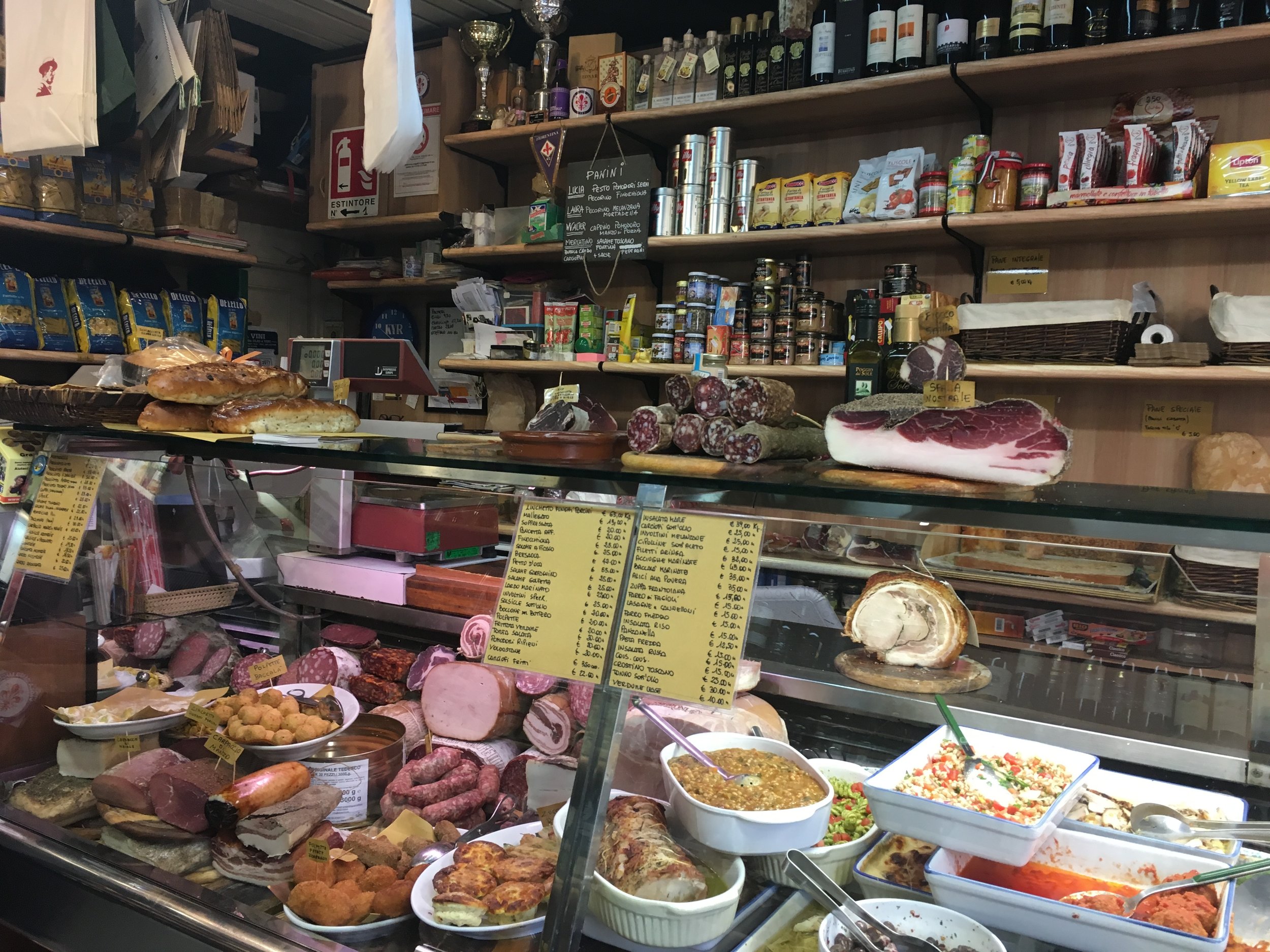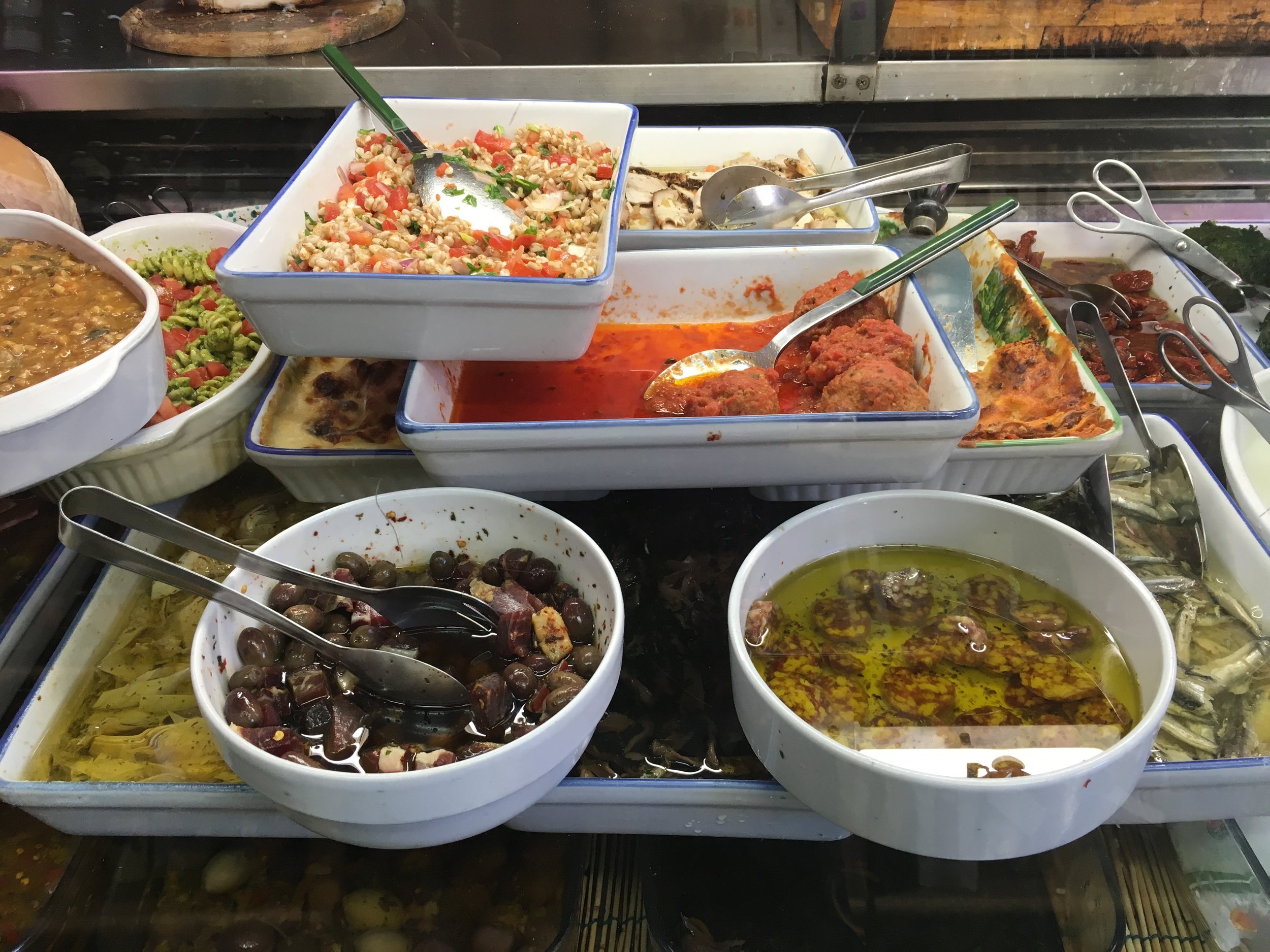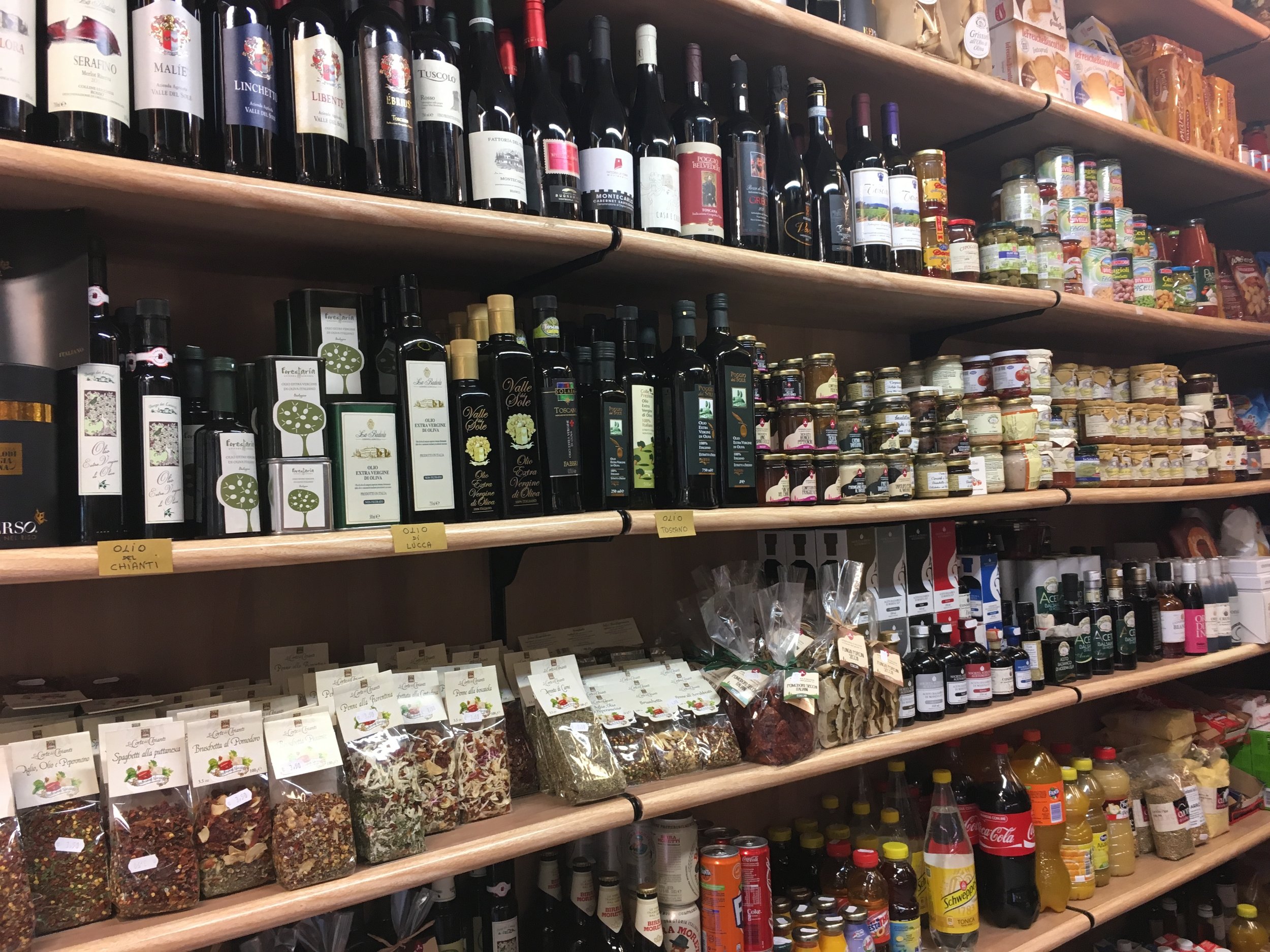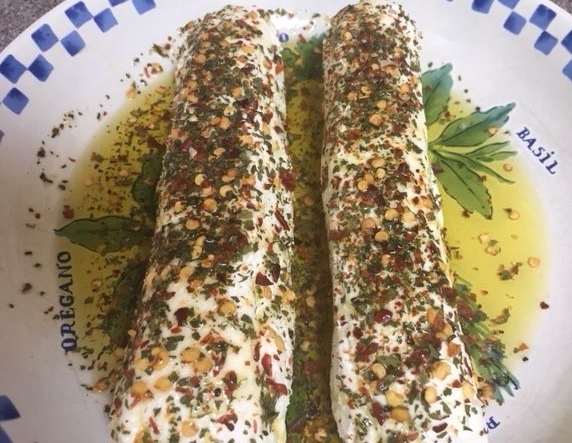Sometimes a "Caprino" is Not a Little Goat
Sometimes a “caprino” is not a little goat, which is proof positive that knowing a little bit of a foreign language can sometimes lead you wildly astray. Let me explain.
Shopping for groceries in one of the small, family-owned shops in Italy is part of living like a local. In Lucca, one of my favorite shops is Il Mercatino. This is a small market run by the friendly team of Walter and Lucia. The shop is brimming with cheeses, meats, anchovies, marinated vegetables, olives, and a variety of prepared foods to take da porta via (to go). There are also local olive oils and wines, along with pastas, breads, smoked salmon, dairy products, and an assortment of other staples. I can stand outside and just gaze into the window for hours; better yet, I can go in and do some shopping!
Because I love this store so much, I frequent it regularly. When I enter the store the owners know exactly what I will buy before I say a word – a caprino. Perhaps two! So, what exactly is a caprino? Directly translated, it would mean “little goat” (goat = capra, little goat = caprino). However, what I want is not a goat, but a small log of soft white cheese marinated in olive oil and spices. It is creamy and delicious, with a a bit of heat from chile flakes. It is especially good when spread on a fresh-from-the-oven piece of focaccia. When I first saw these cheese logs in the display case, I asked, “Come si chiama questi?” What are these called? The answer was “caprini." Little goats.
A tray of caprini at Il Mercatino, Lucca, Italy.
Based on my imperfect grasp of the Italian language, I assumed this meant they were a type of goat cheese. After all, they were called caprini, so it seemed logical. I bought several caprini on that trip. When I arrived home to New Mexico, I set about trying to re-create that taste, which I had grown to love. I don’t know how many brands of goat cheese I tried paired with multiple spice and olive oil combinations, but I never came close to duplicating that fabulous flavor.
When I returned to Lucca the next year, I told the proprietors that when I was home in the United States, I dreamed of their caprini but no matter how hard I tried I couldn’t find a goat cheese as good or the right marinade. They explained that the caprini were not made with formaggio di capra (goat cheese) but rather formaggio di mucca (cow’s milk cheese). Cow’s milk? How did I misunderstand? It turns out that long ago this type of marinated cheese probably was made with goat’s milk and when production changed to the more readily available cow’s milk, the name just stayed the same. Caprino. Little Goat.
This spice mix is the magic ingredient when making caprini.
My complicated attempts at making the marinade were also way off. No steeping of herbs in warmed olive oil needed, no grated lemon peel, no fresh garlic. They kindly showed me how to do it. Open the small package of cheese (very much like a log of cream cheese), put it in a dish, pour some good olive oil over it, and then sprinkle from the little packages of dried spices in the market. Done! Because the shop owners are so kind, they sent me on my way with several of the spice packages to take home; another example of the generosity of Italians.
I’d like to say that I was able to exactly re-create the caprini at home, but our cow’s milk is just not the same as Italian cow’s milk and pure cream cheese didn’t quite do it. I did, however, come up with a pretty good version that combines mostly cream cheese with a bit of mild goat cheese sprinkled with the spices I carry home from Il Mercatino each time I visit and some good Lucchese olive oil. It isn't Il Mercatino's caprini, but it helps carry me through the months at home. Of course, when I get back to Lucca this spring, I’ll head straight for Il Mercatino.
Here is the recipe for my version:
8 oz cream cheese, room temperature 3 oz mild goat cheese, room temperature 6 tablespoons good olive oil 1 teaspoon aglio, olio, & peperoncino spice mix
Mix softened cheeses together until well blended.
Divide into 2 equal halves, place each on a large square of wax paper, folding wax paper to cover the cheese. Roll each half of the cheese (using your hands over the paper) into a 6-inch log. Transfer logs to a shallow dish.
Spoon 3 tablespoons of olive oil over each log. Sprinkle each log with a rounded 1/4 - 1/2 teaspoon of the spice mix (more spice = more heat). Let stand at cool room temperature for an hour before serving, spooning olive oil over cheese to keep it moist.
May refrigerate up to 24 hours before serving; let stand at room temperature hour before serving. Spooning olive oil over cheese to keep it moist.
Serve with crackers or bread.
My homemade version of caprini.
-post by JB







